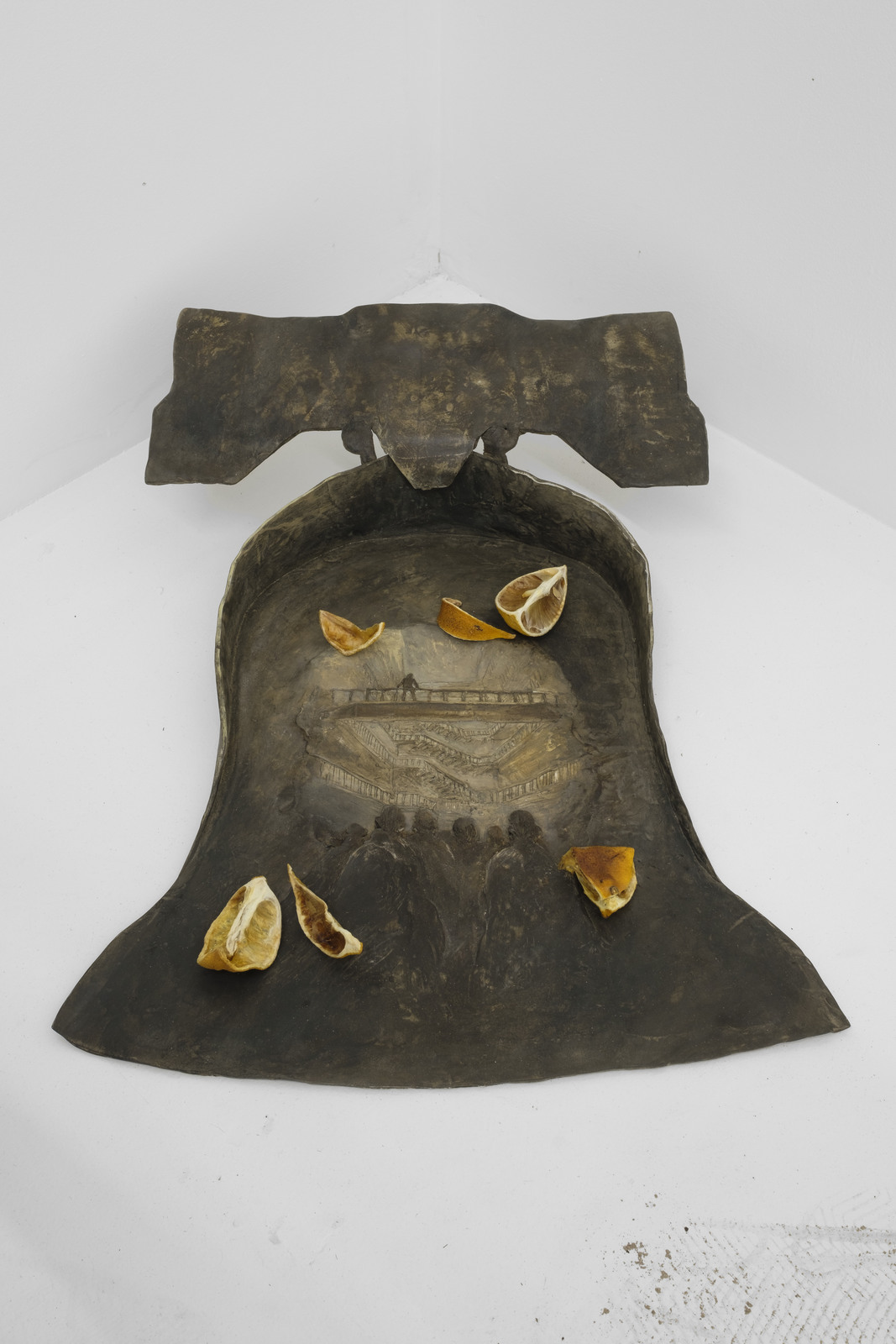Artists: Michael Assiff and Dennis Witkin
Exhibition title: New England’s Dark Day
Venue: Hotel Art Pavilion, New York, US
Date: May 20 – June 20, 2017
Photography: all images copyright and courtesy of the artists and Hotel Art Pavilion
On May 19th, 1780, a strange phenomenon happened in New England: the sun never came out and the day remained as dark as night. We know about New England’s Dark Day because of two types of records that describe it. One is filtered through human experience; texts written in 1780 describe residents in panic, assuming that dark skies could only be interpreted as a sign of the end times. Deacon Samuel Gatchel wrote of the “imminent fulfillment of prophecy” in a text verbosely titled The Signs of the times: or Some expositions and remarks of sundry texts of Scripture, relative to the remarkable phenomenon, or dark-day, which appears in New-England on the nineteenth of May, 1780. Other written reports (there were many) mention unusual responses to the dark day from the natural world: flowers folded their petals, night birds came out to sing, chickens retreated to their roost, cattle returned to their stalls, and frogs croaked as they did at midnight.
In the centuries that followed, we learned of another way to describe the event that took place on New England’s Dark Day through the use of scientific reasoning. Found within the trunks of trees in Ontario’s forests were rings scared with charcoal and resin, indicating that widespread forest fires in Canada caused a thick, dark cloud of smoke to prevent daylight from reaching much of New England.
Artists Michael Assiff and Dennis Witkin have found fertile common ground within the story of New England’s Dark Day. For Assiff, the phenomenon—or perhaps more accurately, the light that science and hindsight has retroactively cast on the phenomenon—provides a parallel to the collective panic we find ourselves in today, in part due to ecological crises too often thought of as independent of human interference and scientific analysis. For Witkin, the 18th-century illustrative engravings and texts produced by New England’s residents provide a poetic backdrop for his work, which often involves antiquated technologies like bells, weathervanes, and lampposts. Their two-person exhibition is the inaugural exhibition for Hotel Art Pavilion. The artist-run gallery is the second phase of a curatorial initiative, hotel-art.us, that was founded in 2012.
A welcome mat constructed of compressed hardwood ash (a collaborative piece by Assiff and Witkin) lies before the entryway to the gallery, leaving soot on the soles of viewers’ shoes before they walk onto the white floor inside. Amidst ashy footprints on the floor sit Witkin’s sculptures: dustpans that seem utilitarian in that they’re depositories fro damage, yet their resonance can only be inferred when free of debris. In the dustpans’ basins, the artist has rendered tableaus of landscapes and interior scenes in relief, and the outlines of the objects mimic the waist and yoke of an old bell.
Upon entry, a dim red motion-censoring light, obscured by a layer of hairspray and ash on its surface, turns on to mark the presence of a viewer. This piece by Assiff continues the artist’s interest in the flawed logic of energy consumption; the energy-consuming light is unable to perform its task due to the remnants of an over-extracted resource (hardwood trees). Again in reference to logging and extractive economies, Assiff’s wall pieces—hand-carved stretcher bars (typically used as the “bones” of a canvas)—depict a replica of a statue from the Algonquin Logging Museum in Ontario, located in the forest that had once burnt down and caused New England’s Dark Day.
Hotel Art Pavilion will donate 50 percent of proceeds from “New England’s Dark Day” to Greenpeace.
Michael Assiff and Dennis Witkin, New England’s Dark Day, 2017, installation view, Hotel Art Pavilion, New York
Michael Assiff, Motion Sensor (Forest), 2017, motion sensor light, hardwood ash, acrylic, LED and incandescent bulbs
Dennis Witkin, Udi’s Direction, 2017
Michael Assiff and Dennis Witkin, Welcome (Mat), 2017, linseed oil, epoxy clay, hardwood ash, burnt and carved plywood
Michael Assiff and Dennis Witkin, New England’s Dark Day, 2017, installation view, Hotel Art Pavilion, New York
Michael Assiff and Dennis Witkin, New England’s Dark Day, 2017, installation view, Hotel Art Pavilion, New York
Michael Assiff, Stretchers (Chevron USA, INC. V Natural Resource Defence Council, INC.), 2017, Linseed oil on carved poplar
Michael Assiff, Stretchers (Chevron USA, INC. V Natural Resource Defence Council, INC.), 2017, Linseed oil on carved poplar
Michael Assiff, Stretchers (People V Brooklyn Cooperage Company), 2017, Linseed oil, latex, and plastic on carved poplar
Michael Assiff, Stretchers (Newfoundland & Laborador V AbitibiBowater, INC), 2017, Linseed oil, latex, and plastic on carved poplar
Michael Assiff, Stretchers (Newfoundland & Laborador V AbitibiBowater, INC), 2017, Linseed oil, latex, and plastic on carved poplar
Dennis Witkin, Dustpan (Factory Floor), 2017, Epoxy clay, cal-tint, patina, dried lemon
Dennis Witkin, Dustpan (Factory Floor), 2017, Epoxy clay, cal-tint, patina, dried lemon
Dennis Witkin, Dustpan (Hospital), 2017, Epoxy clay, cal-tint, patina
Dennis Witkin, Dustpan (Hospital), 2017, Epoxy clay, cal-tint, patina
Dennis Witkin, Dustpan (Group Home), 2017, Epoxy clay, cal-tint, patina, charcoal, gluten free cookie
Dennis Witkin, Dustpan (Group Home), 2017, Epoxy clay, cal-tint, patina, charcoal, gluten free cookie
Michael Assiff and Dennis Witkin, New England’s Dark Day, 2017, installation view, Hotel Art Pavilion, New York


















